|
|
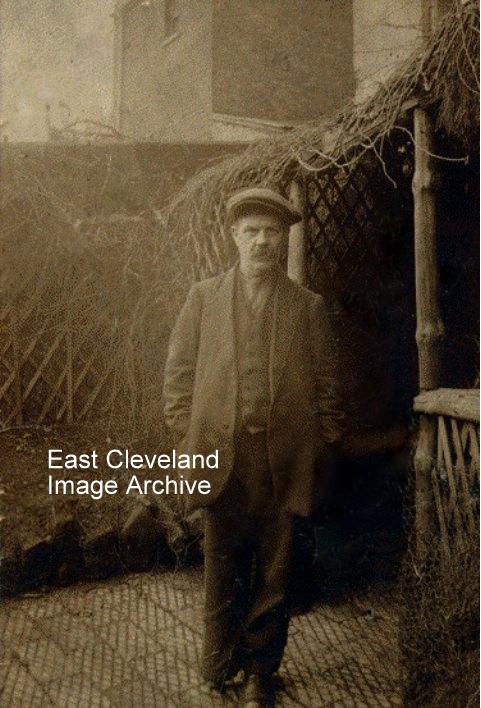
John Corner or ”Fiery Jack” as he was known to the people in and around Loftus; working for many years in the tally cabin at Loftus mine. He was never seen without his cap and the thump of his wooden leg was equally well-known, he could be a frightening character to children with his loud voice. Anyone know when and where this photo was taken?
Margaret Martin tells us: “This is a photograph of John Corner known as ‘Fiery Jack’. I remember him from my childhood as he was a neighbour of my Grandma’s when she lived on Dam Street in Loftus. He lived with his sister and as a child he frightened me with his rather loud voice as he called out when he saw you coming. He was never seen without his cap on and i remember the thump of his wooden leg as he walked past the front door. Definitely a character!!”.
Thanks to Margaret Martin for the update.
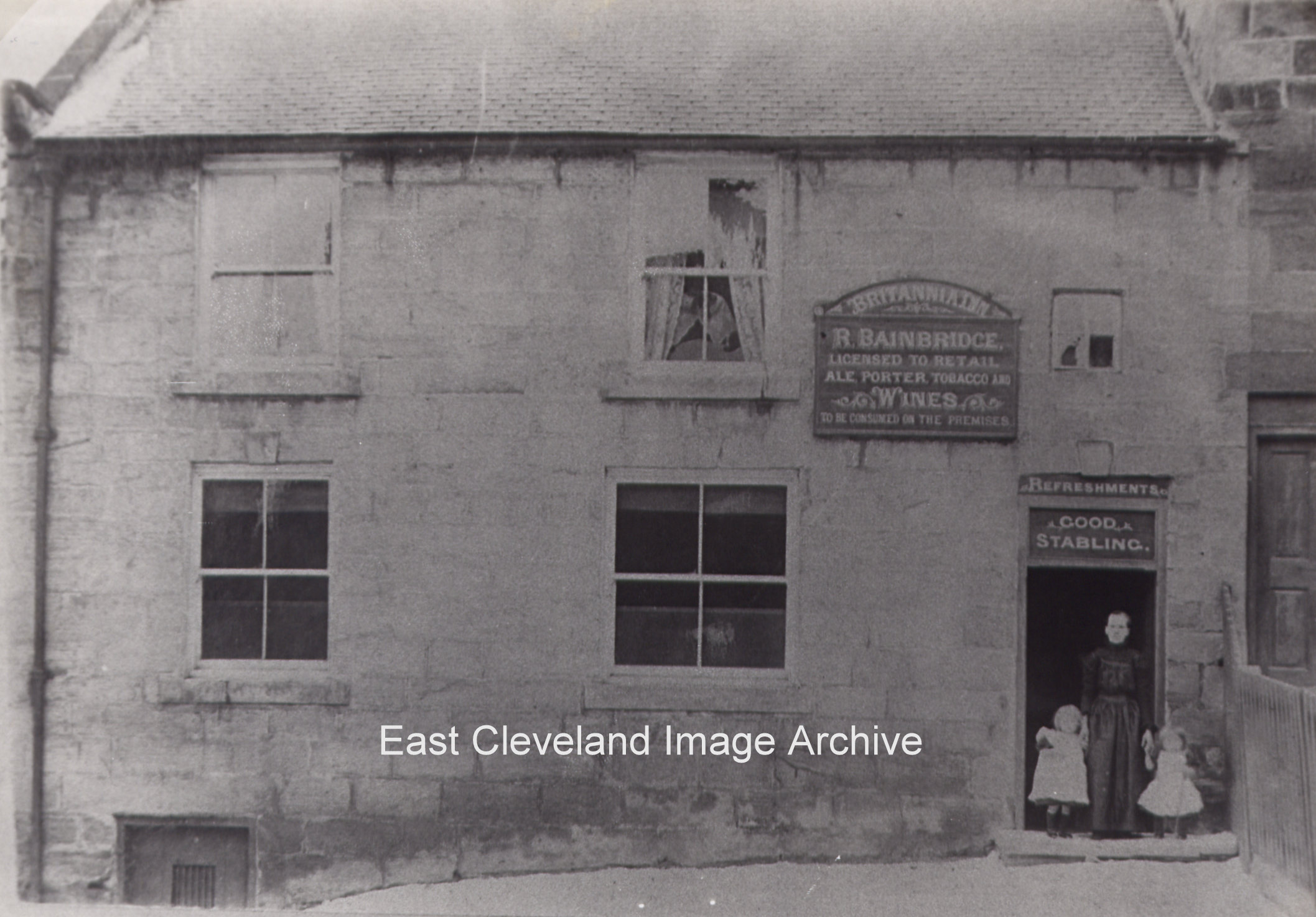
Not the Britannia Inn as we see it today and I don’t remember it being like this. Possibly dates as follows- 1891 Census list: Britannia Inn, 65 High Street, Loftus. Robert Bainbridge (Head) age 44, also described as Engine Driver; wife Mary age 39, daughter Ada age 18, son Timothy age 16 and Ada Robson age 14 general servant. According to Kelly’s Directory of 1905: Robert Bainbridge is listed as Beer Retailer, High Street, Loftus.
Image courtesy of the Pem Holliday Collection and thanks to Eric Johnson for additional information.
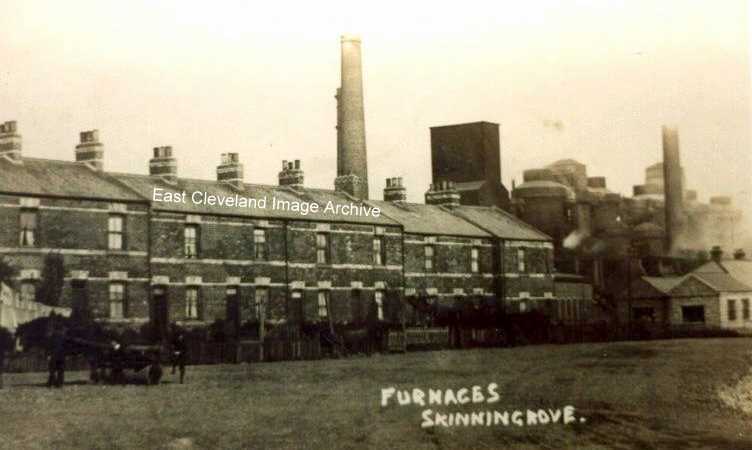
No need to wonder how this row and the one next to it got their name seeing the close proximity of the furnaces. We have the following reminiscences of this terrace; John Winspear tells us: ”I remember them well. I used to walk past these houses every working day from September 1955 till January 1964, on my way to work in the the fitting shop which was situated on the land immediately behind and to left of the two rows of houses. I also delivered sunday papers there for five years. A wonderful group of people who had little in the way of materialistic value but were generous to a fault. I recall the names of only a few the Garbutts, the Parrishs, the Summers; I went to school with sons and daughters of them all. Doris Summers worked in the drawing office as a tracer, her dad Charlie was the trainer for the works junior football team. Salt of the earth”. Derick Pearson also says: ” I also remember the McGuires, the Swales, the Whartons, the Smithies, the Pearsons and others”. Sue Doig (nee Kennedy) tells us: “In 1911, my grandfather, Patrick Kennedy who worked in Skinningrove Main, and his wife Mary and son John lived at 3 Back Row, Furnace Cottages with the owner, Mark Ford and his family”.
Thanks to John Winspear and Derick Pearson for these memories; also to Sue Doig for the update.
This image which features in several collections of East Cleveland images; is of Hannah Laverick. She is portrayed on her way too or from work at the Skinningrove railway station (just off Kilton Lane); Hannah was the first lady porter on the North Eastern Railway in 1914 and since first featuring the image the Archive has now researched and more information is available. Hannah was born at Low Borrowby (near Roxby) in 1894 but by 1911 was living at 3 North Terrace Loftus with her parents (John and Mary) with her younger sister Mary. In 1916 we can trace her membership of the National Union of Railwaymen at Carlin How, she married Frank K. Storry in 1916 and lived for many years in Redcar; she died in 1990. She must have witnessed many changes in both the railways and the whole of East Cleveland!
Image (courtesy of Jack Robinson) featured in a collection compiled by Derick Pearson, additional information courtesy of Ancestry and Find My Past.
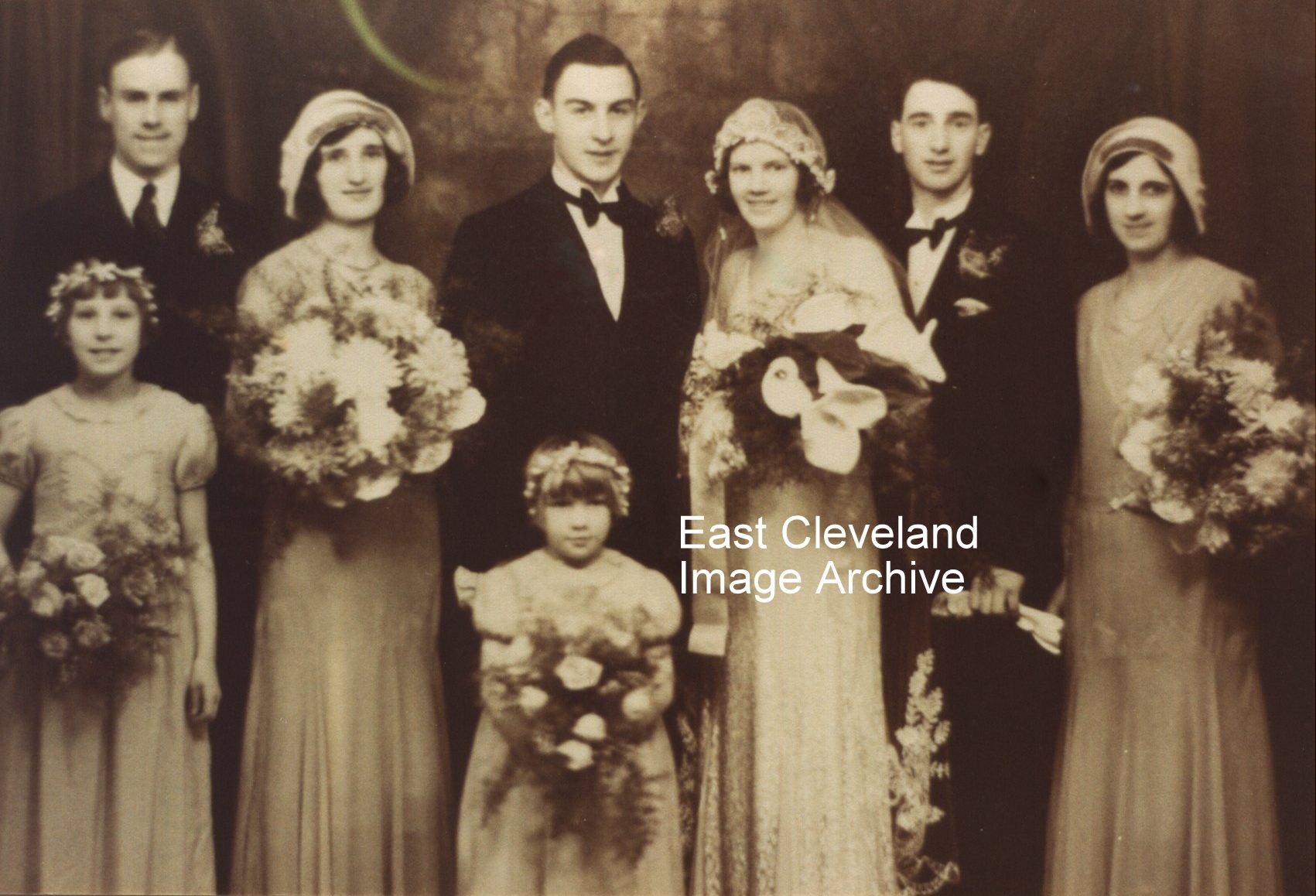
The bride was Rita Webster, born in 1909; her parents were Thomas and Jane Ann (nee Eggleston) Webster. The groom was Harry Sylvester; Rita and Harry ran the off-license shop in Carlin How for many years, Harry was also involved with Saltburn Motor Services or ‘Pickerings’ as they were often called.
Image from a collection compiled by Derick Pearson, who also supplied some information.
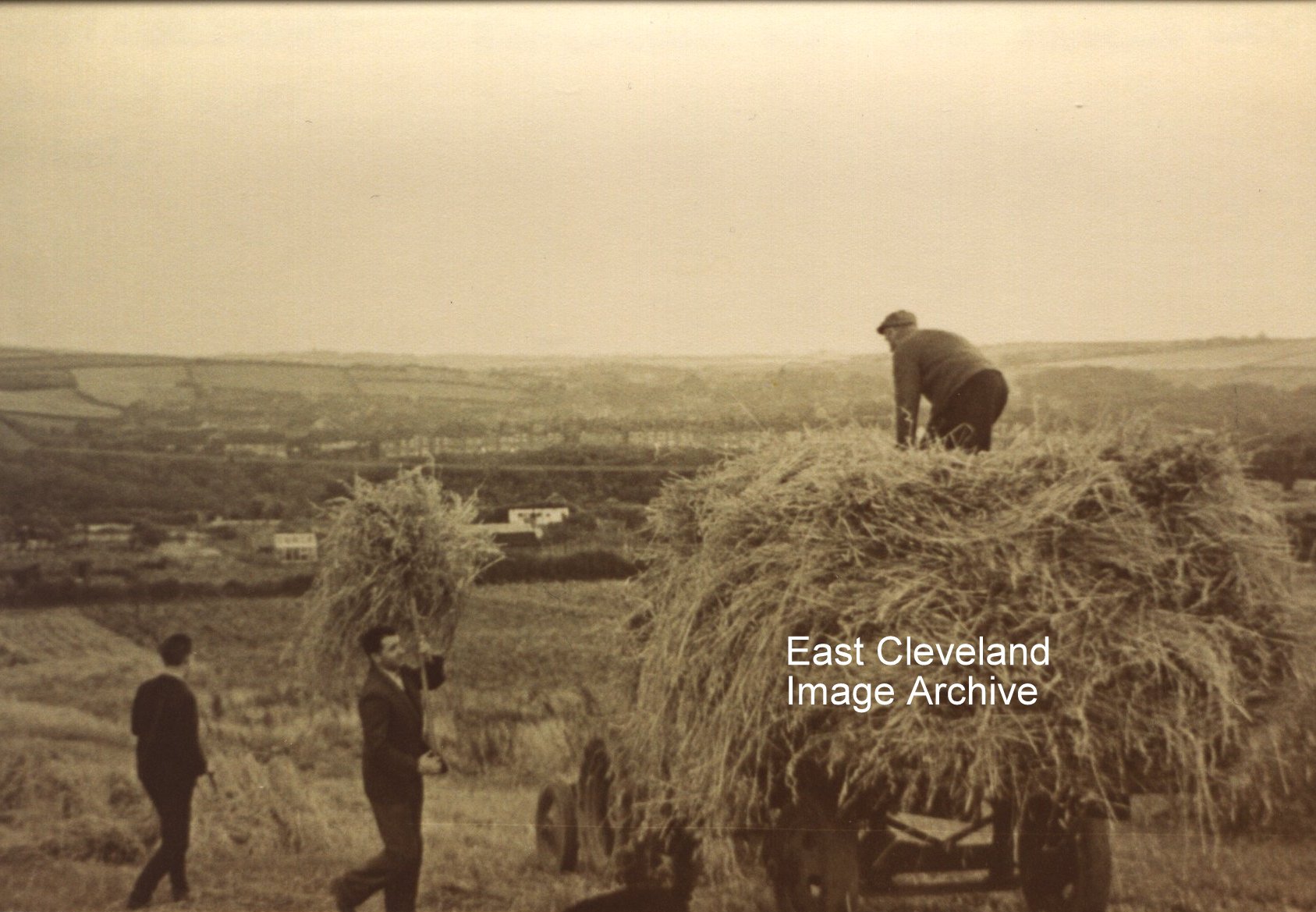
Harvesting in the old-fashioned way no combined harvesters here! Derick Pearson advises: “Jack Collinson standing on top of the hay and Stan Bowman one of the other men in the photograph, taken about 1958; taken in a field at the right hand side of Kilton Bank, overlooking lower Kilton Lane Gardens and in the distance is bank top and Cowscote in Loftus.” When loading this image the editor was unsure as to whether these were sheaves or forkfuls of hay; with closer inspection it appears that it is sheaves of corn being loaded, so our commentary and title have been amended.
Image courtesy of Kath Wardell from a collection compiled by Derick Pearson, thanks to Derick Pearson, G. Baxter and A. Etherington for the updates.
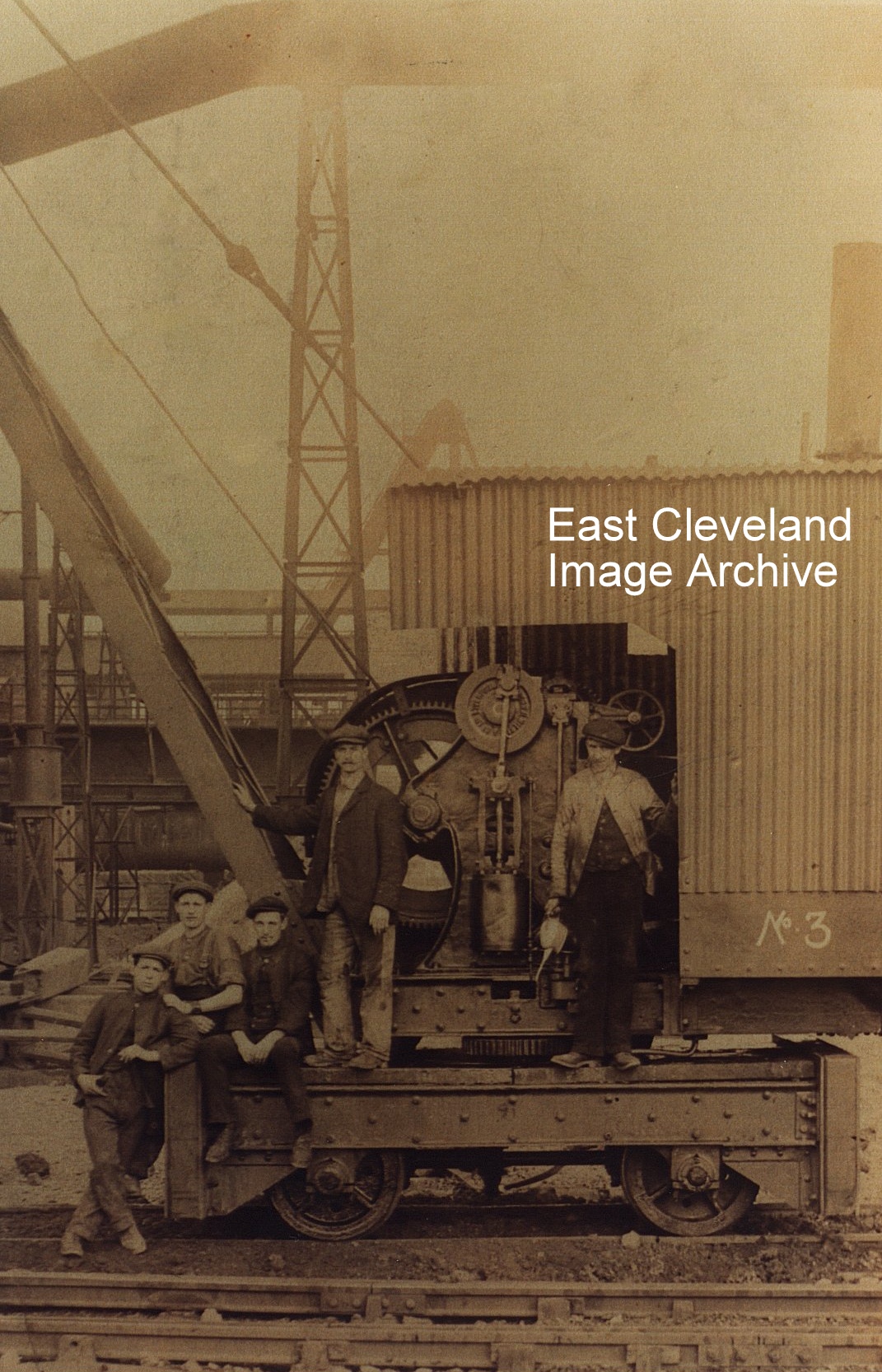
Once again the Archive asked ”Who were these men and what date was this photograph taken?” Terry Clarke t0ld us: ”I remember that crane it was called the Goliath.” George Brown told us: ”This photograph is in the book ‘Skinningrove Iron and Steel Works’ by Cliff Shepherd; it was no. 3 crane, constructed by J. H. Wilson and Co. of Liverpool. The smallest crane at Skinningrove at that time, the photograph was courtesy of the East Cleveland Image Archive”. Whilst Terry Robinson tells us: ”No. 3 three-ton steam crane. I remember as an apprentice fitter, being allowed to drive this crane from the fitting shop back to the old loco shed just before finishing time, as the regular driver Mr Ralph Walker (from East Loftus I think) knew I was interested in all things railway/steam. This was 1966/67; I finished my apprenticeship in 1969.”
Thanks to Terry Clarke, George Brown and Terry Robinson for the updates.
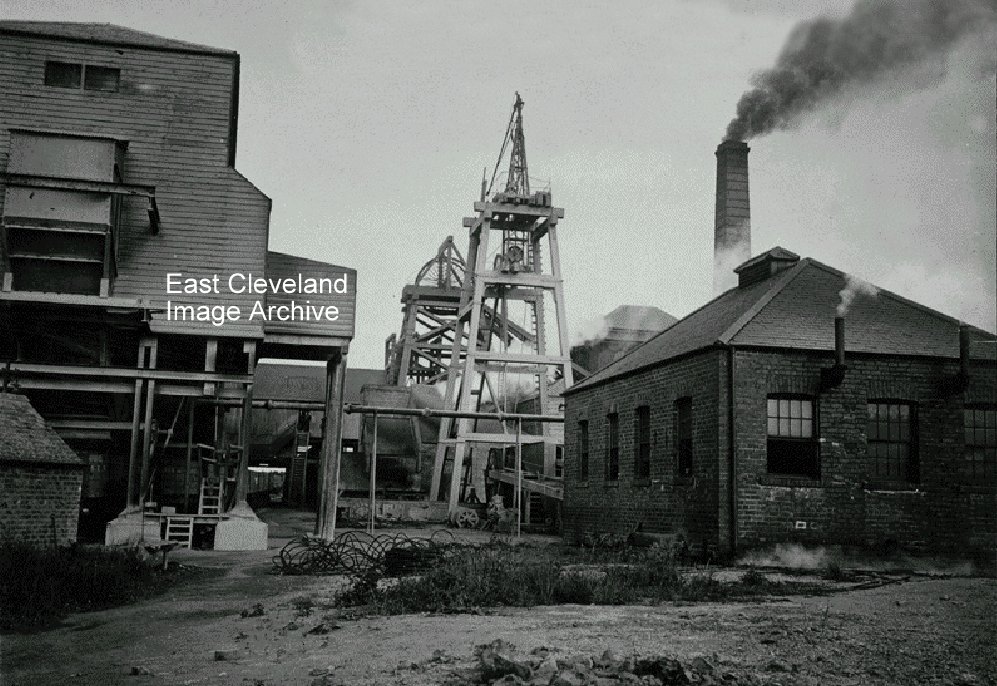
A lovely clear photograph of Kilton Pit in full production by the look of the emissions from the chimney.
Image courtesy of the Pem Holliday Collection.
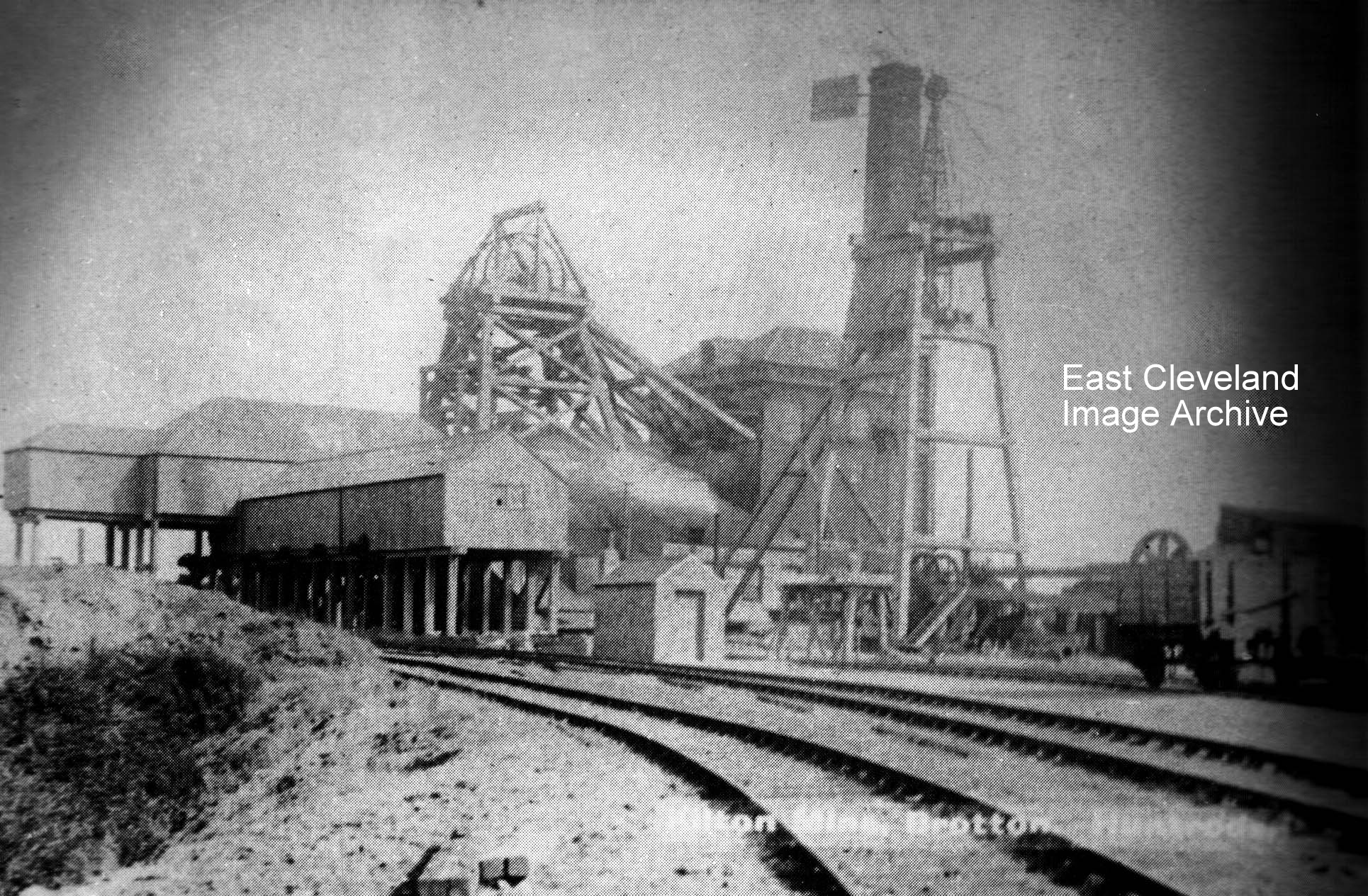
The write up under the Huntrodd’s postcard view of Kilton pit included information that it was 680 feet deep and also was querying the windmill in the background possibly being used to pump water from the mine. Derick Pearson advised: “The shaft with the windmill at the back of this photograph, was an air return shaft as well as a second rout out in the event of problems. The windmill may have been used at that time to drive an output fan to draw the stale air from the workings which would in turn draw clean air in from the other shaft.”
Image courtesy of the Pem Holliday Collection, thanks to Derick Pearson for the update.
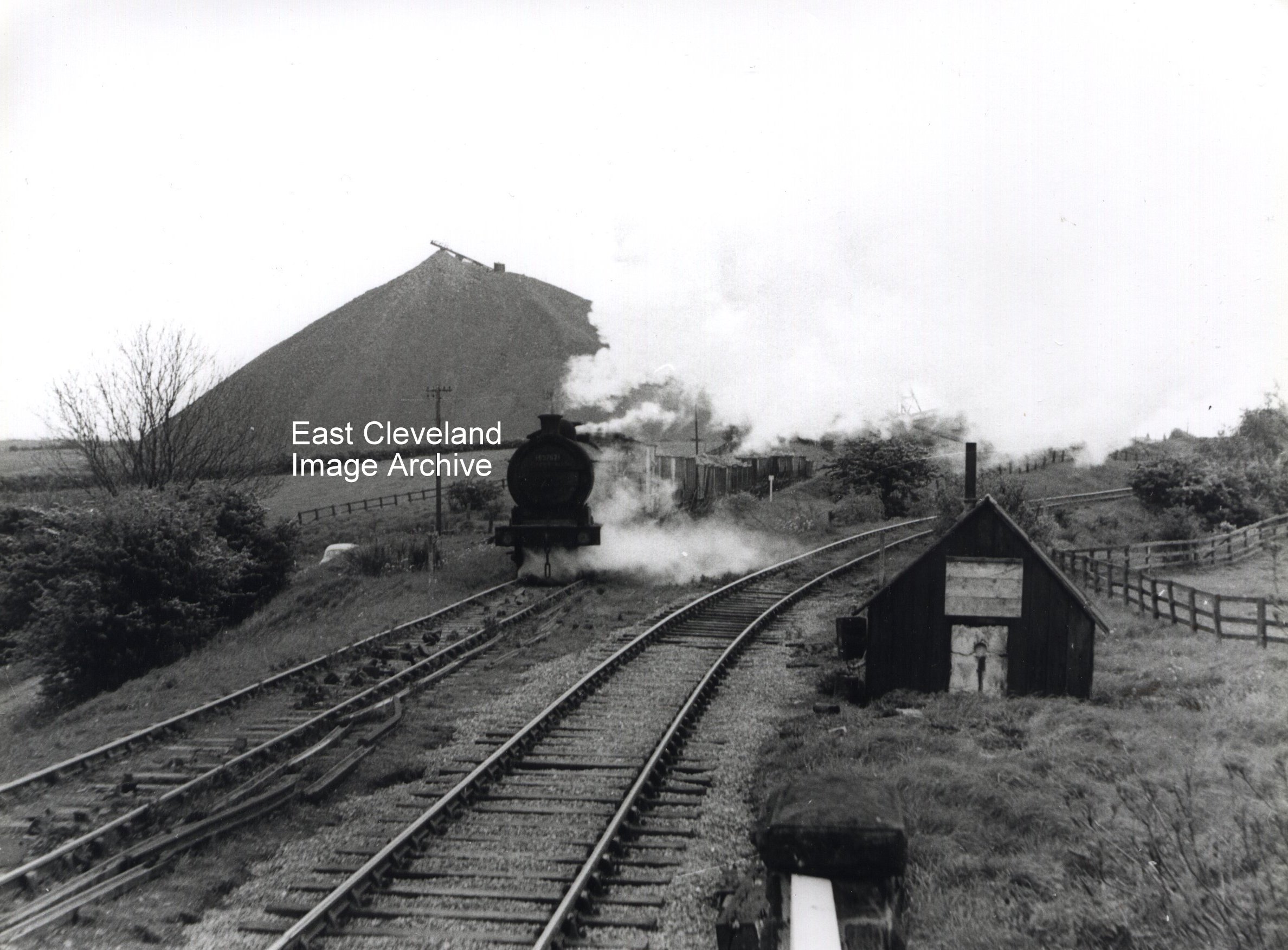
Taken about 1957 of a loaded train from Kilton Mine approaching Lingdale Junction; the Lingdale Mines branch is the one curving to the right and was extremely steep. Simon Chapman told us: “Look carefully at the train and you’ll see the brake van is behind the engine, not at the back of the train. This was allowed in later years because the gradient was down all the way to Brotton, where the engine ran round to reverse the train before taking it to Tees-side. In place of the brake van at the end of the train a lamp or red flag was hung on the back of the last wagon to show to signalmen at Kiltonthorpe Junction and Brotton that the train was complete i.e. a wagon hadn’t been derailed and lost on the way.” Also of interest is the shale spoil ‘hill’ on the left of the image; this is now one of the few remaining hills of excavated spoil from the ironstone mines of East Cleveland; South Skelton being another such reminder. Alan Featonby suggests: “It is possible this photograph was taken on 21st May, 1959. A similar photograph appears in ‘Stephen Chapman’s book Railway Memories No. 18 Cleveland and Whitby’ attributed to Ken Hoole. If so, the locomotive is Class J26 65762 of Thornaby shed. The car by the coal drops is the give away.”
Image courtesy of the Pem Holliday Collection and many thanks to Simon Chapman, Peter Appleton and Alan Featonby for the updates.
|
|



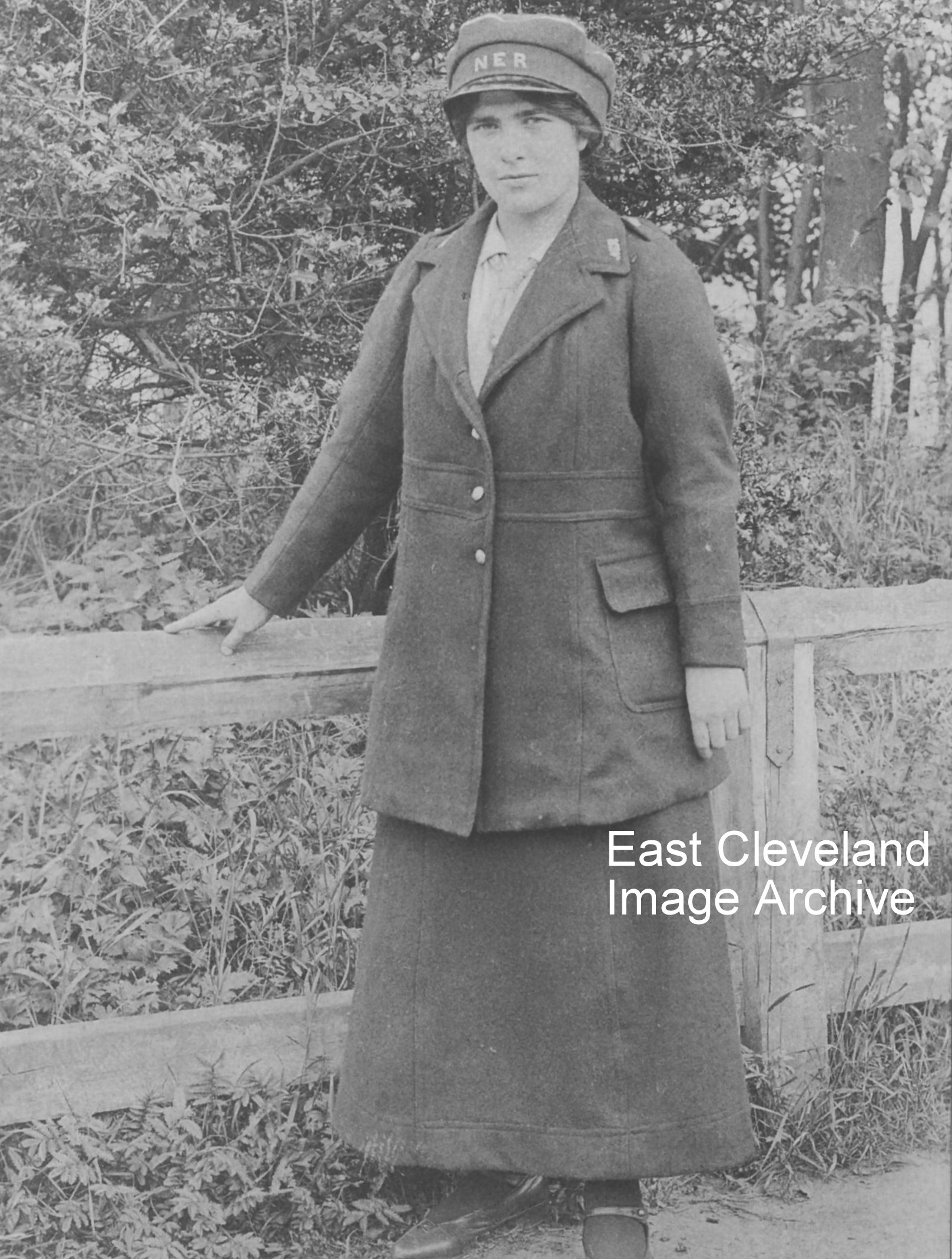






Recent Comments